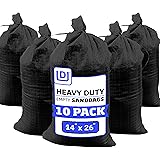Dealing with food and water scarcity
Assessing Your Current Resources
When you realize your emergency supplies are dwindling, the first step is to take stock of what you have left. This isn’t just about counting cans and bottles; it’s about understanding your situation holistically. Go through your pantry, check expiration dates, and think realistically about what can last you the longest.
Keeping a log helps tremendously. Write down every item you have and portion it out. This way, you can stretch every ounce of what you have left. Remember, rationing is your best friend here.
Also, don’t forget about the non-traditional food sources you might already have. That garden in the backyard? It’s going to be more useful than you think.
Implementing Rationing Strategies
Rationing is crucial when supplies are low. Start by dividing your remaining supplies into daily portions. Make sure each person in your household knows these limits. It’s a family effort and everyone needs to pitch in.
This might sound restrictive, but it’s necessary for survival. Stick to high-calorie, nutrient-dense foods. Limit snacks and non-essential consumables. Trust me, it’s all about making sure everyone gets a bit of the essentials.
You can also get creative with meal planning. Stretch your ingredients with soups, stews, and casseroles. These dishes can make a little go a long way, and they often taste better than you’d expect.
Purifying and Conserving Water
Water is arguably more critical than food in an emergency. If your bottled water runs out, look for natural sources like streams or lakes, but always purify it first. Boiling is a tried-and-true method, but you can also use purification tablets or a quality filter.
Collecting rainwater is another viable option. Make sure your collection method is clean and uncontaminated. Storing large quantities of untreated water in big containers can tide you over during dry spells.
== > What if ... Get a FREE Subscription to PREPARE
When conserving water, think about usage reduction. Use minimal water for cooking and personal hygiene. Implement a strict no-waste policy. Every drop counts, literally.
Finding alternative sources and supplies
Foraging and Fishing
When your pantry runs dry, Mother Nature can become your grocery store. Learn about edible plants in your local area. There are so many nutritious wild plants if you just know where to look. Books and online resources can be a great help here.
Fishing is another great option. Check the local laws and make sure you’re following them, but fish can be a fantastic source of protein. Even urban areas might have accessible waterways where you can cast a line.
Remember, safety first. Make sure whatever you are foraging or catching is safe to eat. Consult with local experts if possible.
Bartering with Neighbors
Community is incredibly important in times of crisis. You may find that your neighbors have supplies they are willing to trade. Offer skills or goods that you have in exchange for what you need. It’s a win-win situation.
Networking with your community beforehand creates a mutual support system. Host a meeting to discuss resources, skills, and strategies. This way, when the worst hits, you’re not scrambling to form connections.
Bartering isn’t just about goods. Offering your skills—like repairing tools or cooking—can be just as valuable. Think about how you can contribute and leverage that in your trading efforts.
Using Social Media and Apps
In today’s digital age, social media and apps can be lifesavers. Join local community groups on social platforms. There are often people willing to sell or give away surplus supplies. Crowdsourcing from a larger group increases your chances of finding what you need.
Apps designed for community help like Nextdoor can also be a valuable resource. Post your needs and see how your community can come together to help. It’s amazing what people may have to offer that they’re not using.
Always exercise caution when interacting online. Verify sources and meet in public places if you’re exchanging goods. Safety first, always.
Maintaining mental and emotional well-being
Creating a Routine
In uncertain times, routines can provide a much-needed sense of normalcy. Start each day with a structured plan. Even small routines, like brewing tea or going for a walk, can make a big difference in maintaining your mental well-being.
A routine provides predictability, helping to reduce anxiety. Plan out your meals, tasks, and leisure activities. Knowing what comes next can be comforting in a world that feels out of control.
In your routine, make sure to include self-care activities. Take time to read, meditate, or practice a hobby. Balanced days contribute to a more resilient mindset.
Staying Connected
Social isolation can be more stressful than the physical scarcity of supplies. Keep in touch with friends and family, even if it’s just a quick phone call or a text. Everyone is going through their own struggles, and mutual support is invaluable.
Virtual meetups and conversations can be very grounding. Use video calls to maintain face-to-face interactions. Seeing friendly faces can lift your spirits and remind you that you’re not alone.
Sharing your experiences can provide emotional relief. It’s okay to talk about your fears and challenges. Sometimes just knowing someone is listening can be a huge comfort.
Mindfulness and Meditation
Mindfulness practices can be incredibly beneficial during stressful times. Take a few minutes each day to practice deep breathing or guided meditation. These techniques can reduce anxiety and help you stay in the moment.
Meditation doesn’t have to be complex. Start with just five minutes a day, focusing on your breath. There are plenty of apps and online resources to guide you through the process.
Integrating mindfulness into your daily routine helps build emotional resilience. It’s a practice that feeds into every part of your life, making you better equipped to handle whatever comes your way.
Building a sustainable plan for future crises
Assessing Past Mistakes and Successes
After living through the scarcity of supplies, it’s essential to look back and assess what worked and what didn’t. Take notes on the methods that helped you the most. What resources were essential? Which strategies failed?
Learning from past experiences is the best way to prepare for the future. Maybe you discovered that certain foods lasted longer or that specific waters-saving methods were more effective. Keep a detailed record for future reference.
Don’t shy away from discussing your experiences with others. They might point out things you overlooked or offer new insights and strategies you hadn’t considered.
Creating a Comprehensive Emergency Plan
Having a detailed emergency plan is crucial for future crises. This plan should cover everything from food and water to communication and medical needs. Include steps for different scenarios—natural disasters, blackouts, or economic hardships.
Make sure everyone in your household is familiar with the plan. Regularly update it based on new information or lessons learned. Include a list of emergency contacts and a designated meeting place for your family.
Stockpiling is an ongoing process. Regularly rotate your supplies, discarding expired items, and replenishing what you’ve used. Staying proactive prevents scrambling during emergencies.
Investing in Sustainable Solutions
Consider investing in more sustainable, self-sufficient solutions. These include things like water purifiers, solar panels, or even learning to garden. The more self-reliant you are, the better off you’ll be during an emergency.
Gardening isn’t just a hobby; it’s a way to ensure you have a steady food supply. Start with easy-to-grow vegetables and expand your garden as you gain confidence. It’s a rewarding skill that pays dividends.
Explore renewable energy options. Solar panels can provide power when the grid goes down. Invest in items that help maintain a level of comfort and normalcy even when traditional infrastructures fail.
FAQ
1. How do I start rationing my remaining supplies?
Begin by inventorying your current supplies and portioning them out into daily allowances. Focus on high-calorie, nutrient-dense foods and avoid non-essentials to stretch your resources as long as possible.
2. What are some safe foraging practices?
Educate yourself on edible plants in your area using books or online resources. Always double-check with local experts if you’re unsure and make sure to forage in pesticide-free areas.
3. How can mindfulness help during a crisis?
Mindfulness can reduce anxiety and help maintain mental and emotional well-being. Daily practices like deep breathing or guided meditation provide a sense of calm and help you stay focused on the present moment.
4. What should be included in an emergency plan?
An effective emergency plan should cover food and water supplies, communication strategies, medical needs, and a list of emergency contacts. Regularly update your plan based on new information and past experiences.






